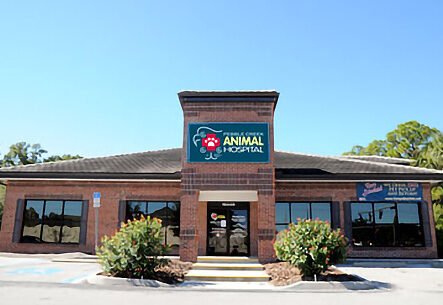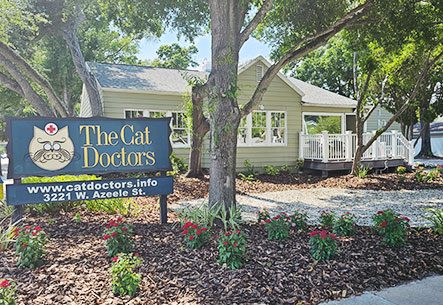Gerbils
What to expect from your pet Gerbil
Gerbils tend to be friendly, clean, quiet and curious pets. They rarely bite and can be easily handled. They have low odor and little waste production. Their small size reduces concerns about space requirements. With proper husbandry, gerbils rarely exhibit problems in captivity.
Because gerbils are very quick movers and tend to jump, they should be supported on the palm of the hand with the base of the tail held close to their body. The handler should avoid grasping the tip of the tail because the skin may pull off the tail. The gerbil may be restrained by scruffing the skin at the nape of the neck or by using a washcloth or other small cloth in which to hold it.
Vital Statistics
- Body length (no tail): 3-6 inches (7-15 cm)
- Total body weight: 50-80 grams (females), 80-130 grams (males)
- Age of sexual maturity: 65-85 days
- Average life span in captivity: 3-5 years
What do Gerbils do all day?
Like all rodents, gerbils need to have safe materials for gnawing that will help wear down the continually growing incisor teeth. Wooden blocks for this purpose are readily available at most pet stores. An exercise wheel with solid flooring provides an outlet for energy, and exercise balls allow the gerbil to explore in a safe plastic ball. Gerbils like to build nests out of nesting material, especially in the cooler winter months. A common characteristic of pet gerbils is their propensity to dig incessantly with their forepaws in the corner of the cage. They also thump with their hind legs.
Is your Gerbil a male or female?
Male gerbils have a large, dark scrotum and a longer anogenital distance than females. Breeding pairs tend to be monogamous and maintain lifelong relationships. It is best to acquaint gerbils with one another before they are 8 weeks of age to try to prevent fighting. Adult gerbils of either sex may fight to the death if they are introduced to each other as adults. Ensuring adequate cage space is also important to eliminating fighting. It is best to house gerbils as a pair; neutering the male can prevent overpopulation. Two same sex gerbils (preferably from the same litter) can be successfully housed together.
What should you feed your Gerbil?
Commercial pellet diets are available for gerbils. Alternatively, commercial seed mixes with a variety of seeds (minimal to no sunflower seeds) may be fed with fresh vegetables (e.g., cabbage, kale, broccoli, carrots, beets) and soaked seeds or sprouts. Alfalfa hay should be available for grazing and is a good calcium source for nursing females. Excessive consumption of sunflower seeds and other high-fat foods will lead to obesity and other health problems.
Fresh clean drinking water should always be available. A sipper tube or small water bottle mounted on the outside of the cage with the drinking spout on the inside is ideal to prevent chewing on the bottle itself.
Where should you house your Gerbil?
Plexiglas enclosures designed for small rodents make adequate houses for gerbils; however, a regular cleaning schedule must be maintained. Solid flooring is preferable to wire flooring. A clean, dry, absorbent and nonabrasive bedding (e.g., aspen wood shavings) of at least 2 cm deep is recommended. Providing 12 hours of light and 12 hours of dark is a good schedule for lighting. The ideal temperature should be between 60-70 F with 30-50% humidity.
How to keep your Gerbil healthy, happy and safe!
- Prompt veterinary care should be sought for any sign of illness.
- Gerbils require a minimum of attention. Thirty minutes a day should be adequate, although they remain tame with frequent handling.
- Fresh food and water should be available at all times.
- The cage must be thoroughly cleaned at least weekly.
- Provide safe items for chewing, such as toilet paper tubes, ceramic toys, pesticide-free and nontoxic tree branches and bark.
- Provide suitable materials for nesting, such as tissue paper, cotton balls, paper torn in strips.
Housing for your gerbil should:
- allow for 36 square inches (232 cm2) per gerbil as a minimum cage size; a minimum of 180 square inches (0.12 m2) for a breeding pair
- have cage sides at least 6 inches (14 cm) high
- be escape-proof
- contain a hide box
- include suitable substrates, such as shredded paper (non-inked), recycled newspaper composite materials or pellets, hardwood chips or shavings and compressed wheat straw. Cedar chips should be avoided as they may be toxic
- include a water bottle even though they are desert animals and drink less than other rodents
It is important to prevent gerbils from accessing:
- electrical cords
- dogs, cats, ferrets and young children
- pesticides and other toxins
- tobacco and cigarette smoke
- cedar or pine shavings
- toxic houseplants
- wire exercise wheels
- plastic toys that can be broken apart and consumed
- wire flooring in its enclosure
- exposure to direct sunlight or temperatures over 90 F
What your veterinarian looks for in a healthy Gerbil:
- Clear bright eyes
- Well formed and stocky body
- Teeth that are aligned properly and not overgrown
- No evidence of lumps or bumps
- A smooth and shiny hair coat
- Sense of curiosity
- Clean anus with no evidence of diarrhea
- Well-formed fecal pellet
Most common disorders of Gerbils
- Trauma (including tail slip)
- Malnutrition
- Rough hair coat
- Sore nose/facial eczema/nasal dermatitis
- Epileptiform seizures
- Diarrhea/enteritis
- Sudden death
- Malocclusion
- Cancer/neoplasia
- Obesity
Having your gerbil examined on a regular basis by an exotic animal veterinarian will help prevent many of the common disorders listed above and support you in having a long, satisfying relationship with your gerbil.
Background information
There are 15 gerbil species worldwide, of which the Mongolian gerbil (Meriones unguiculatus) is the prevalent pet species in the United States. Mongolian gerbils are native to desert regions of Mongolia and northeastern China. They are active both day and night, but peak activity is at night. They are social animals that live in elaborate underground tunnel systems and burrows. All pet gerbils are captive bred for this market. They make appropriate pets for beginners, and their natural curiosity makes them interesting to watch as they explore their environments. Gerbils are available in a variety of color types: agouti (the free-ranging type or normal color), black, albino, white, cinnamon, lilac, blue, cream, silver and sable. Spotted gerbils with multiple coat colors are also popular.
Courtesy of Zoological Education Network
Tampa, FL 33615 (View map)
Tampa, FL 33647 (View map)
Tampa, FL 33617 (View map)
Tampa, FL 33647 (View map)








